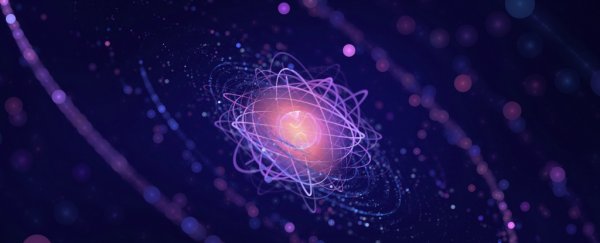An international team of physicists is about to test a "sacrilegious" hypothesis about protons - one of the basic building blocks of the Universe - and the results could force a literal rewrite of nuclear physics textbooks.
The experiments, which are now underway in the US, aim to demonstrate that the structure of protons can change inside the nucleus of an atom under certain conditions. If that's found to be the case, a whole lot of experiments are going to have to be reassessed.
"For many scientists, the idea that the internal structure of protons might change under certain circumstances can seem absurd, even sacrilegious," said one of the researchers, Anthony Thomas, from the University of Adelaide in Australia.
"To others like myself, evidence of this internal change is highly sought after and would help to explain some of the inconsistencies in theoretical physics."
So what exactly would it mean if protons do change their structure? Well for our daily lives, not a whole lot. But it would have big implications in the fields of nuclear and theoretical physics. To understand why, you first need to understand what protons are made of.
While they're one of the smallest building blocks, protons are actually made of smaller particles, known as quarks, which are held together by gluons.
Our current understanding is that the protons inside the nuclei of atoms have the exact same structure as free protons.
But that assumption doesn't quite fit with quantum chromodynamics, the theory that describes the interactions between quarks and gluons. Based on that, the protons inside an atom's nuclei should theoretically undergo changes under certain energy levels.
Up until now, it was pretty much impossible to test whether or not this was the case. But thanks to new equipment at the Thomas Jefferson National Accelerator Facility in Virginia, that's about to change.
"By firing a beam of electrons at an atomic nucleus you can measure the difference in energy of the outgoing electrons, representing the changed state," said Thomas. "We are making some fairly strong predictions about what the outcomes of those tests will show, and we're hopeful of a definitive measurement."
In preparation for the first experiments, Thomas and his team have published their predictions in Physical Review Letters (full version at ArXiv), so that they're on the record.
Whether they're right or wrong, the results will be a huge deal for our understanding of some of the most crucial building blocks in the Universe, and will hopefully lead to a better understanding of the physics that drives the interactions of everything around us.
"The ramifications for the scientific world are significant," said Thomas. "This is about as high stakes as it gets in science. It could represent a new paradigm for nuclear physics."
